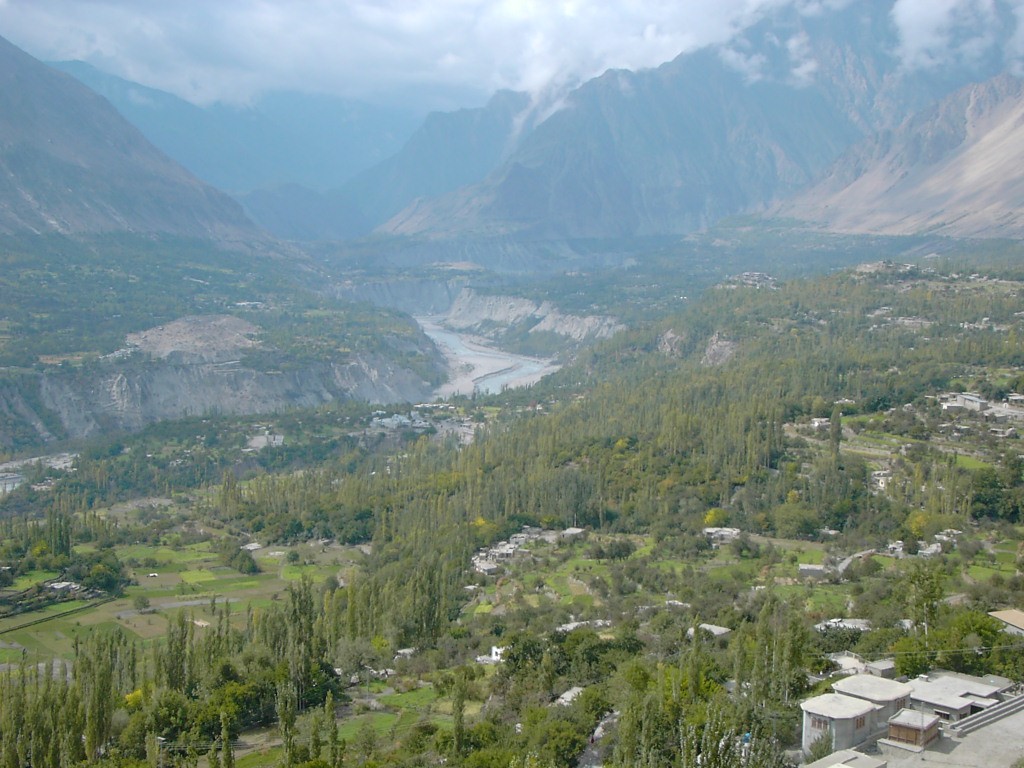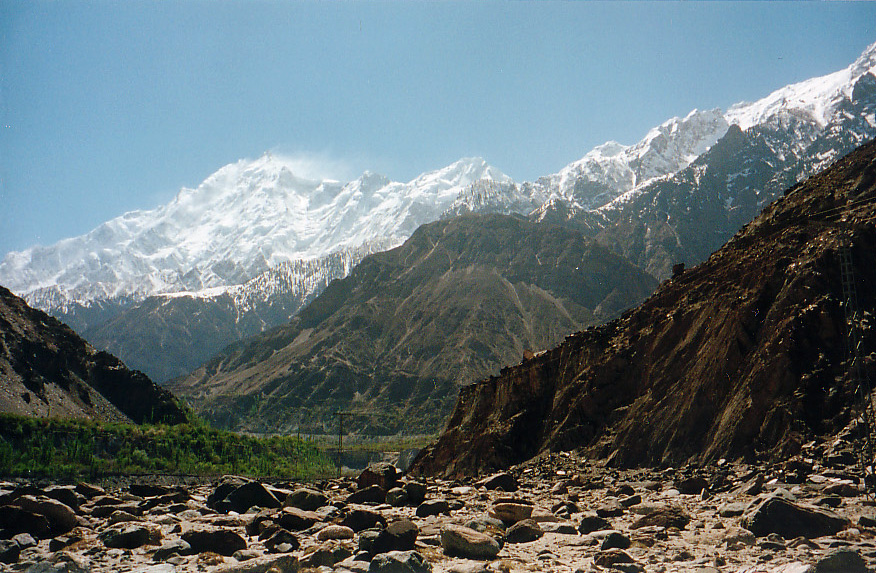Nagar (princely State) on:
[Wikipedia]
[Google]
[Amazon]
Nagar (, ''Riyasat Nagar'') was a Burusho princely


Government of Pakistan
{{DEFAULTSORT:Nagar Dynasties of Pakistan Former monarchies in Pakistani history Princely states of Pakistan History of Gilgit-Baltistan Regions of Gilgit-Baltistan States and territories established in the 14th century 1974 disestablishments
state
State most commonly refers to:
* State (polity), a centralized political organization that regulates law and society within a territory
**Sovereign state, a sovereign polity in international law, commonly referred to as a country
**Nation state, a ...
located in the northern region of present-day Gilgit–Baltistan, Pakistan. Although under the suzerainty of the Jammu and Kashmir (princely state)
Jammu and Kashmir, also known as Kashmir and Jammu, was a princely state in a subsidiary alliance with the Company rule in India, British East India Company from 1846 to 1858 and under the ''Suzerainty#British_paramountcy, paramountcy'' (or t ...
, Nagar was not a part of it, and had status of a separate state. Before August 1947, it maintained a subsidiary alliance with British India. It shared its borders with the Gilgit Agency states to the south and west, while to the north and east, it bordered the princely state of District Hunza. From November 1947 to 1974, Nagar was recognized as a princely state within Pakistan, with its administrative center in the town of Nagar.
The land that was previously part of Nagar now comprises three tehsils within the Nagar District of northern Pakistan.
History
Nagar, established in the 14th century, operated as an autonomous principality until theBritish
British may refer to:
Peoples, culture, and language
* British people, nationals or natives of the United Kingdom, British Overseas Territories and Crown Dependencies.
* British national identity, the characteristics of British people and culture ...
exerted control over the region during the Hunza–Nagar Campaign (1889–1893). Subsequently, it became a colonial princely state under the jurisdiction of the Gilgit Agency until 1947. However, starting in 1868, Nagar was a vassal state under the authority of the Maharaja of Jammu and Kashmir, even though it was never directly governed by Kashmir. The rulers of Nagar were considered to be among the most loyal vassals of the Maharajas of Jammu and Kashmir, sending annual tributes to their Durbars until 1947. The British granted them a hereditary gun salute
A gun salute or cannon salute is the use of a piece of artillery to fire shots, often 21 in number (''21-gun salute''), with the aim of marking an honor or celebrating a joyful event. It is a tradition in many countries around the world.
Histo ...
of 15-guns.
In November 1947, the ruler, Mir Shaukat Ali Khan, acceded Nagar to Pakistan, which became responsible for its external affairs and defense, while Nagar maintained internal self-government. In 1968, Syed Yahya Shah, the first educated politician of the valley, demanded civil rights from the Mir of Nagar. In 1972, the Pakistan People's Party government (under Prime Minister Zulfiqar Ali Bhutto
Zulfikar Ali Bhutto (5 January 1928 – 4 April 1979) was a Pakistani barrister and politician who served as the fourth president of Pakistan from 1971 to 1973 and later as the ninth Prime Minister of Pakistan, prime minister of Pakistan from 19 ...
) forced the Mir of Nagar to abdicate. The area was then merged with the Northern Areas.Muhammad Ismail Tehseen, ''Buroshall Say Nagar Tak ka Safar'', Syed Yahya Shah, ''Brushal ke Qabail'', both in Urdu, available in Municipal Library at Gilgit


Government
The state was governed by the hereditary rulers of the Maglot dynasty, who were referred to as ''Mir
''Mir'' (, ; ) was a space station operated in low Earth orbit from 1986 to 2001, first by the Soviet Union and later by the Russia, Russian Federation. ''Mir'' was the first modular space station and was assembled in orbit from 1986 to ...
''. The details of these early rulers are uncertain; the first definite dates available are from 1839. In November 1947, the state became one of the princely states of Pakistan
The Princely States of Pakistan () were princely states of the British Indian Empire which Instrument of accession, acceded to the new Dominion of Pakistan in 1947 and 1948, following the partition of India, partition of British India and its In ...
. Brigadier Mir Shaukat Ali Khan was the last ruler of the State before it was abolished by Pakistani PM Zulfiqar Ali Bhutto
Zulfikar Ali Bhutto (5 January 1928 – 4 April 1979) was a Pakistani barrister and politician who served as the fourth president of Pakistan from 1971 to 1973 and later as the ninth Prime Minister of Pakistan, prime minister of Pakistan from 19 ...
in 1972.
Population
Demographics
There are around 90,000 inhabitants of the Nagar valley ( AKRSP Census, 2000). As of now, the population is estimated to have exceeded 130,000. Nagar is home to two main ethnic groups: theBurushaski
Burushaski (; , ) is a language isolate, spoken by the Burusho people, who predominantly reside in northern Gilgit-Baltistan, Pakistan. There are also a few hundred speakers of this language in northern Jammu and Kashmir (union territory), Jammu ...
speakers and the Shina speakers. An older form of Burushaski
Burushaski (; , ) is a language isolate, spoken by the Burusho people, who predominantly reside in northern Gilgit-Baltistan, Pakistan. There are also a few hundred speakers of this language in northern Jammu and Kashmir (union territory), Jammu ...
is still spoken in the valley with a subtle modern accent. Additionally, a third language, Bedeski, is also still spoken in Chalt Valley of Nagar.
Religion
The population is predominantly Shia Isna'asheri ( Jafaria).Geography
The terrain of Nagar is highly mountainous, offering a degree of natural protection against invading forces. The highest peak in the area is Mount Dastagilsar, standing at 7,885 meters, located in Hisper to the south of the town of Nagar. The Karakoram Highway passes through Nagar, connecting Pakistan to China via the Khunjerab Pass. The road follows the Hunza River for a considerable stretch, traveling through Nagar and into the Hunza region. In terms of local languages, Nagar Valley is divided into two main areas: Nagar Shinaki and Nagar Burosho.Villages of Nagar
Shina Speaking Villages in Nagar (Shinaki/Sheenbar) * Chalat (Paaeen/baala) * Rabat (Paaeen/baala) * Bar Valley * Chaprote Valley * Budalas valley * Jafarabad Valley * Nilt Valley * Thol Valley * Qasimabad Valley (Masoot) * Ghulmet Valley * Yal Valley * Pissan Valley * Minapin Valley Burushaski Speaking Villages in Nagar * Nagarkhas * Sumayar Valley * Sikandar Abad * Miachar Valley * Dadimal Valley * Phakker Valley * Hakuchar Valley * Shayar Valley * Askurdas Valley * Hoper Valley * Hisper Valley Bilingual Valleys in Nagar * Chalt Paeen Valley * Akbarabad Valley * Jafarabad Valley * Qasimabad Valley (Mascoot) * Ghulmet Valley * Pissan Valley * Minapin Valley The Nagar villages are populated by religious scholars, educators, sportsmen, craftsmen and craftswomen, farmers, hunters and fishermen, handicraftsmen, miners, shepherds, adventurers, mountaineers, and so on.References
Further reading
* Mohammad Ismail Nashad, ''Buroshall say Nagar Tek Ka Safar'' * Syed Mohammad Yahya Shah, ''Rasala Buroshall'' * E. F. Knight, Zafar Hayat Paul, ''Where the Three Empires Meet''Sources and external links
Government of Pakistan
{{DEFAULTSORT:Nagar Dynasties of Pakistan Former monarchies in Pakistani history Princely states of Pakistan History of Gilgit-Baltistan Regions of Gilgit-Baltistan States and territories established in the 14th century 1974 disestablishments